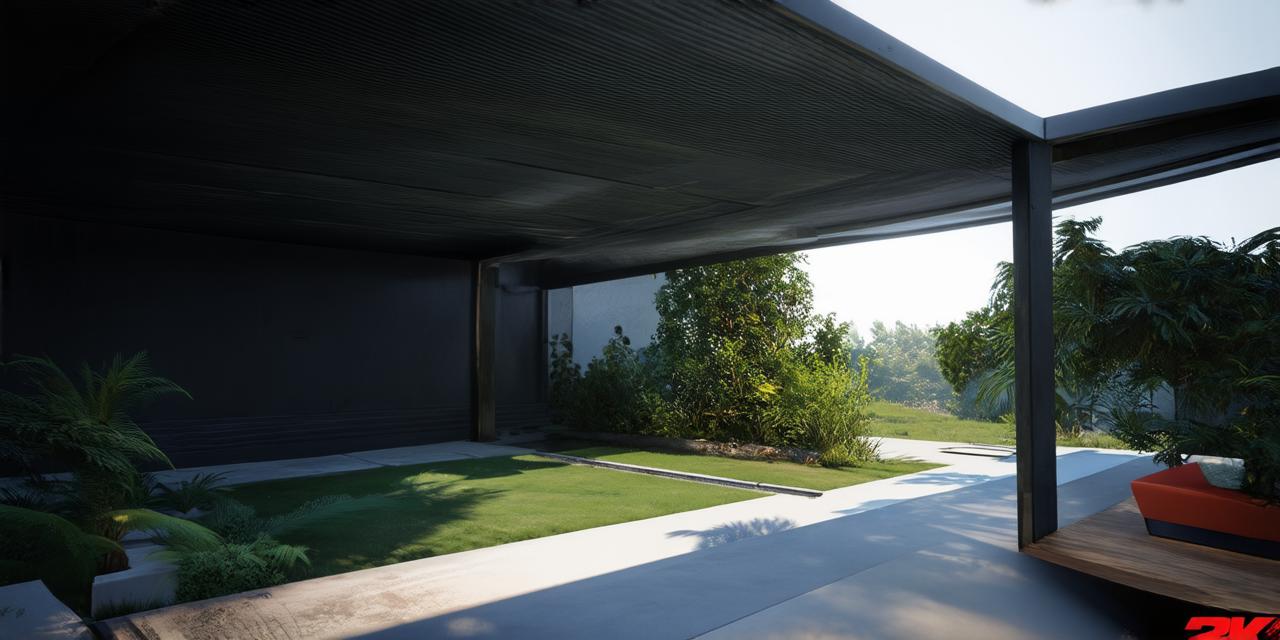Creating immersive backgrounds in Unity 3D can significantly enhance the visual appeal and interactivity of your games or applications. In this beginner’s guide, we will explore different techniques and tools to create stunning backdrops that engage and captivate your audience.
1. Understanding the basics

Before diving into the world of Unity 3D, it is essential to understand some fundamental concepts. Firstly, let us define a background in Unity 3D. A background refers to any element in the scene that appears behind the main focus of the game or application. This could be anything from a simple texture to a complex 3D model.
1. Choosing the right tools
To create immersive backgrounds in Unity 3D, you will need to use various tools such as textures, 3D models, shaders, and scripts. Here is a brief overview of each tool:
- Textures: Textures are images that you can apply to your game objects to give them color, texture, and other visual properties. You can create your textures or download pre-made ones from online resources.
- 3D models: 3D models are digital representations of three-dimensional objects that you can import into Unity 3D. There are various software programs available for creating 3D models, such as Blender, Maya, and SketchUp.
- Shaders: Shaders are code snippets that determine the visual appearance of your game objects. You can create custom shaders to achieve unique effects such as reflections, shadows, and particle systems.
- Scripts: Scripts are pieces of code that you can use to automate tasks and interact with your game objects. There are various scripting languages available in Unity 3D, including C and JavaScript.
1. Creating a 2D background
Creating a 2D background in Unity 3D is relatively simple. Here is a step-by-step guide:
- Create a new scene in Unity 3D.
- Import a 2D texture that you want to use as your background.
- Create a new game object and add the texture to it.
- Position the game object to fill the entire screen.
- Adjust the texture’s size and position to achieve the desired effect.
1. Creating a 3D background
Creating a 3D background in Unity 3D requires more advanced skills. Here is a step-by-step guide:
- Create a new scene in Unity 3D.
- Import a 3D model that you want to use as your background.
- Position and scale the model to fill the entire screen.
- Add lighting and materials to enhance the visual appeal of the model.
- Use camera movement to create an immersive environment.
1. Using shaders for visual effects
Shaders are powerful tools that you can use to achieve unique visual effects in your Unity 3D scenes. Here are some examples of shader effects:
- Reflections: You can use reflections to make surfaces look more realistic by reflecting objects and lights in them.
- Shadows: You can create shadows to give depth and dimension to your game objects.
- Particle systems: You can use particle systems to create stunning visual effects such as explosions, fire, and smoke.
1. Using scripts for interactivity
Scripts are essential for creating interactive environments in Unity 3D. Here are some examples of script-based interactivity:
- Animation events: You can use animation events to trigger actions when an animation ends or starts. For example, you can play a sound effect or change the scene when an animation completes.
- Input controls: You can use input controls to allow players to interact with your game objects. For example, you can use the mouse to move an object or the keyboard to trigger actions.
- Networking: You can use networking to enable multiplayer games and applications. This involves creating a server that all clients can connect to and communicating with each other using messages.
1. Best practices for creating immersive backgrounds
To create truly immersive backgrounds in Unity 3D, it is essential to follow best practices such as:
- Optimize your scenes for performance by reducing the number of draw calls and minimizing the use of high-polygon models.
- Use high-quality textures and materials that enhance the visual appeal of your scenes.
- Use sound effects and music to complement the visuals and create a more immersive environment.
- Test your scenes on different devices and platforms to ensure they work well across all platforms.
1. Summary
Creating immersive backgrounds in Unity 3D is an art form that requires creativity, technical skills, and attention to detail. By following the guidelines outlined in this beginner’s guide, you can create stunning backdrops that engage and captivate your audience. Remember to experiment with different tools and techniques to achieve the desired effect and always optimize your scenes for performance.
FAQs:
Here are some frequently asked questions about creating immersive backgrounds in Unity 3D:
- What is a background in Unity 3D? A background in Unity 3D refers to any element in the scene that appears behind the main focus of the game or application.
- What are some common types of backgrounds in Unity 3D? Some common types of backgrounds in Unity 3D include 2D sprites, 3D models, textures, and more.
- How do I create a 2D background in Unity 3D? To create a 2D background in Unity 3D, you can follow these steps: create a new scene, import a 2D texture, create a new game object, add the texture to it, position the game object to fill the entire screen, and adjust the texture’s size and position.
- How do I create a 3D background in Unity 3D? To create a 3D background in Unity 3D, you can follow these steps: create a new scene, import a 3D model, position and scale the model to fill the entire screen, add lighting and materials, and use camera movement to create an immersive environment.
- What are some examples of shader effects in Unity 3D? Some examples of shader effects in Unity 3D include reflections, shadows, and particle systems.
- What are some examples of script-based interactivity in Unity 3D? Some examples of script-based interactivity in Unity 3D include animation events, input controls, and networking.
- What are some best practices for creating immersive backgrounds in Unity 3D? Some best practices for creating immersive backgrounds in Unity 3D include optimizing your scenes for performance, using high-quality textures and materials, using sound effects and music to complement the visuals, and testing your scenes on different devices and platforms.
